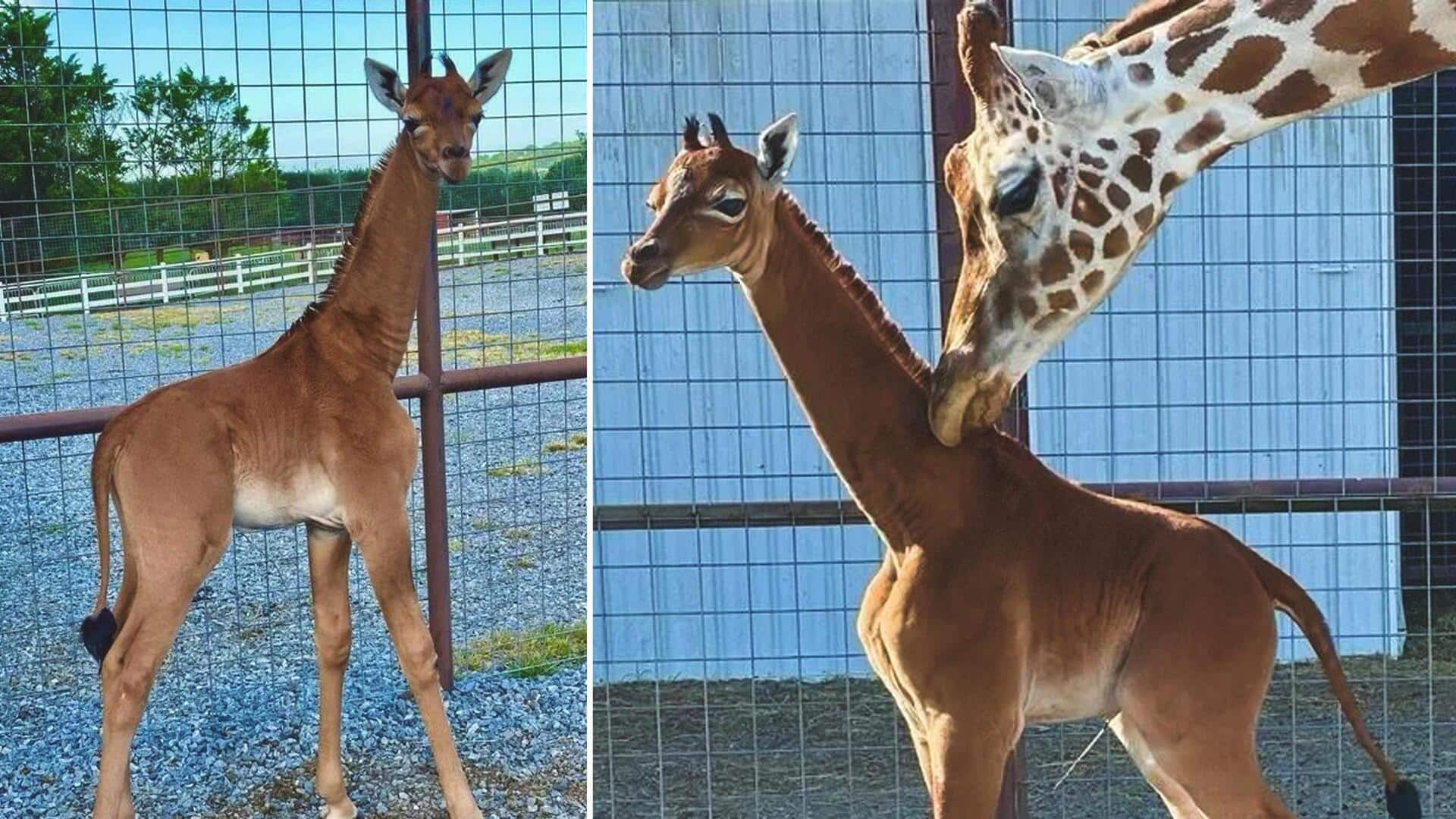
US: Tennessee zoo welcomes the world's only spotless giraffe
What's the story
In a surprising twist at a zoo in Tennessee, United States, a rare event has taken place in the animal kingdom. A female giraffe was born on July 31 with a single brown color all over her body, unlike the patterned appearance that giraffes usually have. She is believed to be the world's only monocolored giraffe with not even a single spot on her.
Conservation
The unique birth would help raise awareness for giraffe conservation
With the birth of this one-of-a-kind giraffe at Brights Zoo in Tennessee, its founder, Tony Bright, hopes that it would help shed light on the problems faced by giraffes worldwide. Conveying his concern in a press release, Bright stated, "Wild [Giraffe] populations are silently slipping into extinction, with 40% of the wild giraffe population lost in just the last three decades."
Camoflague
'Safer for her to be born in captivity': Zoo director
David Bright, the director of the zoo, stated, "It's better she's born in captivity. In the wild, they use those spots for camouflage... By being solid colored, she may not be able to hide quite as well." The already six-foot-tall baby giraffe is thriving under her mother's care. The man noted that her behavior is similar to other giraffe calves they have raised.
Name suggestion
Brights Zoo is asking for name suggestions
Brights Zoo seeks the public's help in naming the unnamed baby giraffe from four options: Kipekee (Unique), Firyali (Unusual or Extraordinary), Shakiri (She is most beautiful), and Jamella (One of great beauty). The names will be posted on the zoo's Facebook page on Tuesday, with a two-week voting period. "Those four are the four the family are all really attached to," said David Bright.
Purpose of spots
Purpose of spots on giraffe's body
Giraffes have spots on their bodies that do more than just help them camouflage. According to the Giraffe Conservation Foundation, these spots also play a part in their unique blood circulation system. Under each spot, there's a complex network of blood vessels. This network helps regulate heat. These vessels also help them regulate blood flow to and from their tall head.